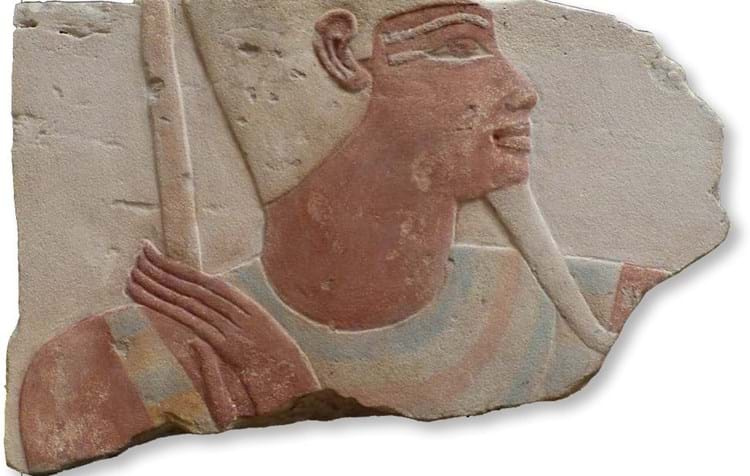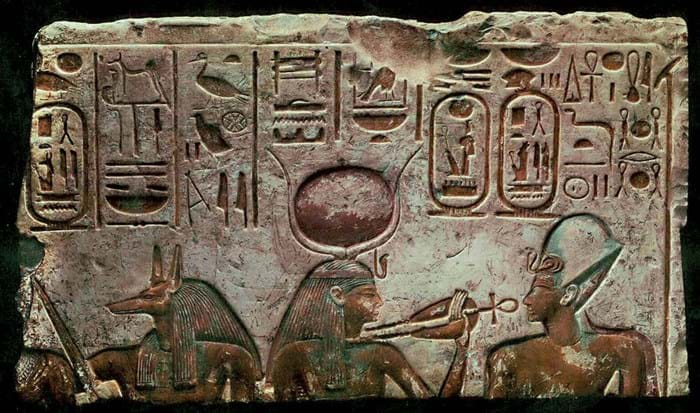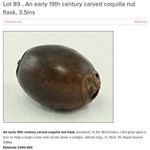
CircArt, which has now gone live, allows registered users to submit objects for appraisal. This allows, according to the BM, “a dedicated team to offer uniquely informed expertise on objects” including those with special awareness of the sites being looted.
However, two prominent dealer associations in the sector have raised concerns about the platform.
Object research
Under CircArt, BM curators and heritage professionals as well as ancient art specialists in Egypt and Sudan will research the objects listed.
Third parties, as long as they are registered, will be able to submit objects that emerge on the market for an appraisal of their provenance, or to raise concerns.
The CircArt team also conducts “proactive research”, independent of received communication, and says its “consultative service” will promote higher standards of due diligence among the sellers and buyers of artefacts.
CircArt started in 2018 but the database became operational in February. Assistant keeper of the British Museum’s Egyptian and Sudanese department Marcel Marée said the benefits to the trade of engaging with the platform included reducing exposure to risk and establishing trust across the market through an enhanced due diligence process.
Dealer concerns
Both the Antiquities Dealers’ Association (ADA) and International Association of Dealers in Ancient Art (IADAA) were involved in initial discussions to establish the scheme and were originally supportive.
But they have now raised questions, including access to the database being limited to the CircArt team and whether sufficient protocols are in place to protect good-faith purchasers.
Chairman of the ADA Joanna van der Lande said: “With the database only accessible to the CircArt team, it is not publicly available or transparent in the way the trade had originally agreed with the BM.
“Were it to be an open database, then Egyptian antiquities could be uploaded whether they are currently circulating on the market or have done so in the past and would be open to public scrutiny.”
Vincent Geerling, chairman of IADAA, said: “Together with the ADA we started talks in 2018 with the BM about procedures to be followed, as we are keen to detect recent looting and to help find the perpetrators, but we also want to protect the rights of the thousands of innocent owners in possession of legally circulated Egyptian objects.
“Unfortunately the procedures, agreed on in 2018, have still not materialised, and this undermines our confidence that the database will be managed and used properly, as was originally envisaged.”
Marée refuted any suggestion that the institution had rolled back on any agreement.
“Different from what has been suggested, the BM never signed agreements with any dealers’ associations. However, CircArt has welcomed and continues to welcome constructive feedback from the trade, as from all other interested parties. The platform can only function on a basis of compromise and genuine goodwill from all concerned.”
He added: “Many dealers and collectors will only share data if CircArt protects these from public access. The same view is held by a range of other contributors of data, including heritage professionals in the countries affected by looting, museums, private collectors, and law enforcement agencies.
“In the course of 2018 it became clear that our initial concept required adjustment, whereby registered users do not search but request a search of our system, performed by CircArt staff. We communicate the search result to the user, with our assessment of any possible issues with the object.”

A relief of King Seti I that was illegally excavated at Asyut in Middle Egypt. After being identified on the London art market in 2014, it has now been returned to Egypt.
‘Provenance issues’
The ADA expressed concern that the legitimate trade may be damaged by a potentially large number of objects becoming tarnished “whether or not they are in breach of UK or EU law”.
Marée, though, stressed the role of the CircArt specialists is advisory and not ‘policing’. “However, it is our and anyone else’s civic duty to report suspected evidence of illicit trade to the relevant authorities,” he said. “CircArt recognises that even the best-intentioned buyers and sellers are likely, sooner or later, to handle illicit material, because so much of this is now in circulation. The risk of financial and reputational damage is very real – not just to dealers, but also to museums and private collectors.
“We do not ‘undermine’ the trade, as some alarmists would have it. We help counteract the illicit trade, by offering better safeguards to ethical players in the trade – and free of charge, too.”
The BM said 4700 artefacts were already registered on the platform as having been identified with provenance issues. It highlighted examples of recently repatriated pieces including a large slab from Asyut, which had been offered for auction in London and was subsequently returned to Egypt, where it has been on display in the Sohag Museum since 2018.
When asked about the 4700 listed artefacts, van der Lande said: “We have been surprised to read of so many items. It is not clear what is meant by ‘provenance issues’ or exactly how many are under investigation by law enforcement agencies.
“As Egypt legally exported hundreds of thousands of Egyptian antiquities up until 1983, with little or no possibility of any documentation proving export actually surviving or ever having existed, it makes the job of matching provenance to object very difficult.”
Marée said that just under half of the 4700 objects are under police investigation.
“Objects illegally excavated and trafficked are more often identifiable than is widely assumed,” he said. “Suspicious patterns in the sort of material being offered on the market also matter. This is why the service provided by CircArt is so important: it makes such signs more easily knowable through expert advice – also for people with less or no specialist knowledge.”
Van der Lande said: “To be clear, the trade had welcomed the opportunity to work collaboratively with the BM to improve due diligence checks but all along we have asked for proper protocols to be put in place. There is still a way to make this all work.”
ADA has proposed the following:
• agreed and defined understanding of ‘provenance issues’;
• an accreditation scheme;
• clear protocols as to process and which will respect and uphold lawful title;
• the registration of items in approved terms;
• agreed process of adjudication when a problem arises
Van der Lande added: “We do need to find a way forward which targets the looters, while protecting people’s rights which are enshrined both in national and international law.”
For more information on the CircArt project visit:
britishmuseum.org/our-work/departments/egypt-and-sudan/circulating-artefacts














